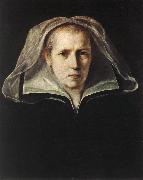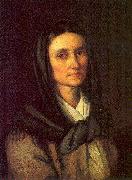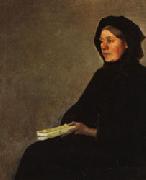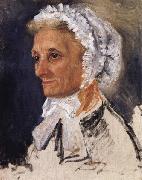
Oil On
Canvas, Real Flavor of Old Masters
|
RENI, Guido
|
|||
|
|
|||
| Italian Baroque Era Painter, 1575-1642 Italian painter, draughtsman and etcher. He was one of the greatest and most influential of the 17th-century Italian painters, whose sophisticated and complex art dominated the Bolognese school. A classicizing artist, deeply influenced by Greco-Roman art and by Raphael but also by the mannered elegance of Parmigianino's paintings, he sought an ideal beauty; his work was especially celebrated for its compositional and figural grace. In his religious art he was concerned with the expression of intense emotion, often charged with pathos; according to his biographer Malvasia, he boasted that he 'could paint heads with their eyes uplifted a hundred different ways' to give form to a state of ecstasy or divine inspiration. | |||
|
|
|||
|
|
Portrait of the Artist's Mother new1/RENI, Guido11.jpg Painting ID:: 8874 Visit European Gallery |
1612 Oil on canvas, 64 x 55 cm Pinacoteca Nazionale, Bologna | |
Height Width |
INS/CM |
||
|
X |
|
||
|
|
|||
|
Petrich, Soma Orlai
|
|||
|
|
|||
| Hungarian, 1822-1880 was a Hungarian painter. Petrich was born to a Serbian father and Hungarian mother. He originally wanted to become a writer. He was a pupil of Jakab Marastoni in 1846 and attended F. Waldmuller's school in Vienna from 1847. He often painted historical themese and in his lithographs he portrayed experiences during the war of independence. He studied at Kaulbach in Munich from 1850. He painted "The Corpse of Louis II" in 1851, | |||
|
|
|||
|
|
Portrait of the Artist's Mother new5/Petrich, Soma Orlai-445326.jpg Painting ID:: 19856 Visit European Gallery |
Approx. 1853 Oil on canvas Hungarian National Gallery, Budapest. | |
Height Width |
INS/CM |
||
|
X |
|
||
|
|
|||
|
Henry Lerolle
|
|||
|
|
|||
|
|
|||
|
|
Portrait of the Artist's Mother Henry Lerolle1.jpg Painting ID:: 11519 Visit European Gallery |
Paris 1848-Paris 1929 Portrait of the Artist's Mother(Salon de la Societe Nationale des Beaux-Arts,1895) 3' 3 1/4'' x 3' 3 1/4''(100 x 100 cm) | |
Height Width |
INS/CM |
||
|
X |
|
||
|
|
|||
|
Pierre Renoir
|
|||
|
|
|||
| French Impressionist Painter, 1841-1919 Pierre-Auguste Renoir (February 25, 1841?CDecember 3, 1919) was a French artist who was a leading painter in the development of the Impressionist style. As a celebrator of beauty, and especially feminine sensuality, it has been said that "Renoir is the final representative of a tradition which runs directly from Rubens to Watteau". Renoir's paintings are notable for their vibrant light and saturated color, most often focusing on people in intimate and candid compositions. The female nude was one of his primary subjects. In characteristic Impressionist style, Renoir suggested the details of a scene through freely brushed touches of color, so that his figures softly fuse with one another and their surroundings. His initial paintings show the influence of the colorism of Eugene Delacroix and the luminosity of Camille Corot. He also admired the realism of Gustave Courbet and Edouard Manet, and his early work resembles theirs in his use of black as a color. As well, Renoir admired Edgar Degas' sense of movement. Another painter Renoir greatly admired was the 18th century master François Boucher. A fine example of Renoir's early work, and evidence of the influence of Courbet's realism, is Diana, 1867. Ostensibly a mythological subject, the painting is a naturalistic studio work, the figure carefully observed, solidly modeled, and superimposed upon a contrived landscape. If the work is still a 'student' piece, already Renoir's heightened personal response to female sensuality is present. The model was Lise Tr??hot, then the artist's mistress and inspiration for a number of paintings. In the late 1860s, through the practice of painting light and water en plein air (in the open air), he and his friend Claude Monet discovered that the color of shadows is not brown or black, but the reflected color of the objects surrounding them. Several pairs of paintings exist in which Renoir and Monet, working side-by-side, depicted the same scenes (La Grenouill??re, 1869). One of the best known Impressionist works is Renoir's 1876 Dance at Le Moulin de la Galette (Le Bal au Moulin de la Galette). The painting depicts an open-air scene, crowded with people, at a popular dance garden on the Butte Montmartre, close to where he lived. On the Terrace, oil on canvas, 1881, Art Institute of ChicagoThe works of his early maturity were typically Impressionist snapshots of real life, full of sparkling colour and light. By the mid 1880s, however, he had broken with the movement to apply a more disciplined, formal technique to portraits and figure paintings, particularly of women, such as The Bathers, which was created during 1884-87. It was a trip to Italy in 1881, when he saw works by Raphael and other Renaissance masters, that convinced him that he was on the wrong path, and for the next several years he painted in a more severe style, in an attempt to return to classicism. This is sometimes called his "Ingres period", as he concentrated on his drawing and emphasized the outlines of figures. After 1890, however, he changed direction again, returning to the use of thinly brushed color which dissolved outlines as in his earlier work. From this period onward he concentrated especially on monumental nudes and domestic scenes, fine examples of which are Girls at the Piano, 1892, and Grandes Baigneuses, 1918-19. The latter painting is the most typical and successful of Renoir's late, abundantly fleshed nudes. A prolific artist, he made several thousand paintings. The warm sensuality of Renoir's style made his paintings some of the most well-known and frequently-reproduced works in the history of art.. | |||
|
|
|||
|
|
Portrait of the Artist's Mother new3/Pierre Renoir-793429.jpg Painting ID:: 28567 Visit European Gallery |
1807-1896 1860 Oil on canvas 45 x 38 cm Private collection (mk64) | |
Height Width |
INS/CM |
||
|
X |
|
||
|
|
|||










